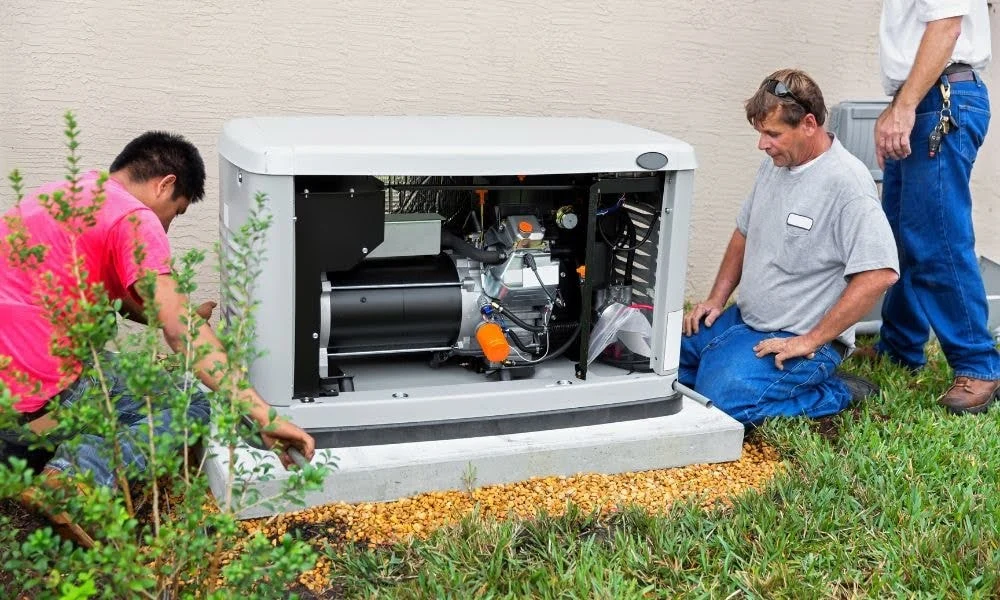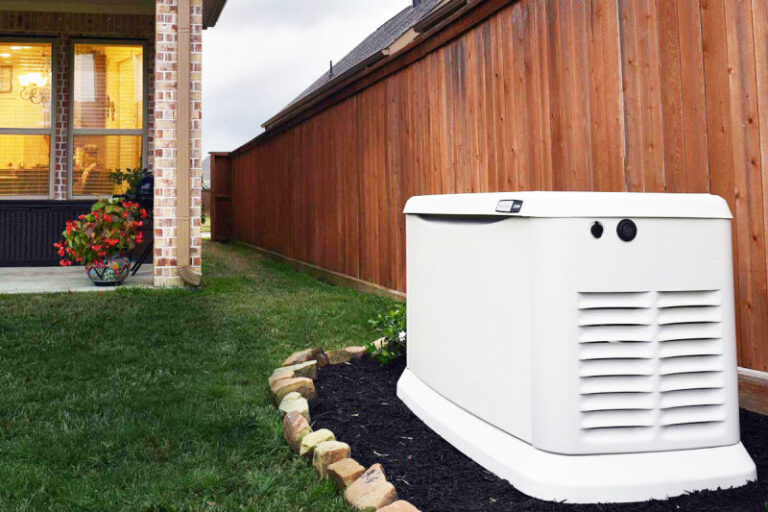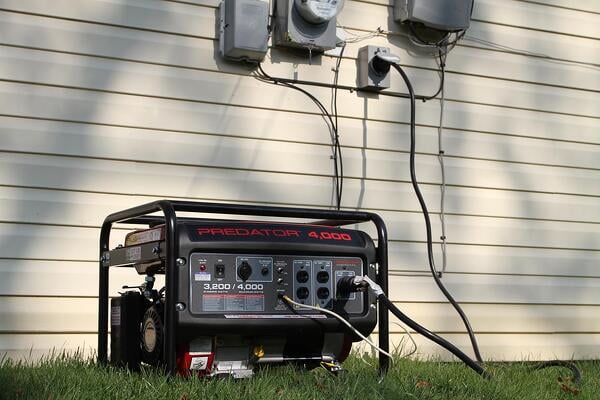Generator Sizing Guide for NC Homes
Have you ever been in the middle of a storm, and suddenly the power goes out? Yes, it’s a headache we all want to avoid. For homeowners in North Carolina, having a reliable generator isn’t just a luxury—it’s a necessity. This guide will help you navigate the ins and outs of choosing the right generator size to keep your home running smoothly during those unexpected outages.
Getting the right generator size isn’t just about keeping the lights on; it’s about ensuring your entire home operates safely and efficiently during a power outage. An undersized generator can leave you in the dark (literally), while an oversized one can burn through fuel unnecessarily and cost you more in the long run. Striking the perfect balance will save you money and provide peace of mind, knowing that you’re prepared for any power interruption with a reliable backup power.
Understanding Power Requirements
The first step in sizing your generator is figuring out your home’s total wattage requirements. Start by listing all the appliances and systems you want to power during an outage and note their wattage. This will give you a clear picture of how much power you need.
Essential vs. Non-Essential Loads
Next, categorize your appliances into essential and non-essential loads. Essential loads include items like refrigerators, heating systems, and medical equipment—basically, anything you can’t do without during an outage. Non-essential loads might include entertainment systems and decorative lighting. Prioritizing essential loads ensures that your critical needs are met first.
Peak vs. Continuous Usage
Generators have two critical ratings: peak (or surge) and continuous (or running) wattage.
- Peak Wattage: The maximum power a generator can handle in short bursts, necessary for starting up appliances with motors.
- Continuous Wattage: The amount of power a generator can supply steadily over an extended period, is crucial for keeping essential appliances running smoothly.
Factors Affecting Sizing
Several factors come into play when determining the size generator you need for your home. First, climate considerations are crucial, especially in North Carolina, where hot summers and occasional hurricanes can significantly impact power usage. Your house size and layout also matter; larger homes with more rooms and electrical systems will naturally require a more powerful generator. Additionally, an inventory of all appliances and electronics you plan to run during an outage will help ensure your generator installation is sufficient to meet your power demands.
Choosing the Right Generator Type
Selecting the right generator type depends on your specific needs and preferences. Here’s a quick rundown of the main types to help you decide:
- Portable Generators: These are versatile and can power essential electrical appliances during short-term power outages. They’re fueled by gasoline or propane and can be moved around as needed.
- Standby Generators: These provide automatic backup power for your home during outages. They run on natural gas or propane and are permanently installed, offering a seamless transition during power interruptions.
- Inverter Generators: Known for their efficiency and quiet operation, these are ideal for sensitive electrical appliances. They adjust engine speed based on power needs, making them fuel-efficient and environmentally friendly.
Generator Fuel Options
Choosing the right fuel for your generator is crucial for efficiency and reliability. Gasoline is widely available and easy to use, making it a common choice for portable generators, though it has a shorter shelf life and can be challenging to store in large quantities.
Propane, on the other hand, is a clean-burning fuel with a long shelf life, ideal for standby generators, and safer to store than gasoline, though it requires a larger storage tank. Diesel is known for its efficiency and durability, often used in larger generators due to its higher power output per gallon compared to gasoline and propane, but it can be noisier and requires more maintenance
Assessing Installation Considerations
When planning your generator installation, it’s important to consider the location, ventilation requirements, and noise levels. For home standby generators, choose a location that is safe and easily accessible, ensuring it is far enough from windows and doors to prevent exhaust from entering your home.
Proper ventilation is vital to avoid the buildup of harmful fumes, so place the generator in an area with adequate airflow. Be mindful of noise considerations; select a spot where the generator’s operation won’t disturb your household or neighbors, and consider using sound-dampening materials if necessary.
Sizing Calculations and Formulas
Accurately sizing your generator involves specific calculations:
Wattage Calculation Methodologies: List all the electrical appliances and systems you want to power and note their wattage requirements. Consider both peak and continuous wattage.
For example, if you want to power a refrigerator (700 watts running, 2200 watts peak), a sump pump (1000 watts running, 2000 watts peak), and lights (400 watts running), you would total the running wattages (700 + 1000 + 400 = 2100 watts) and ensure your generator can handle the combined peak wattage (2200 + 2000 = 4200 watts).
Generator Sizing Recommendations
Consult both manufacturer guidelines and industry standards for safe and effective generator use. Manufacturer guidelines offer specific recommendations tailored to their generators, while industry standards, such as those provided by the National Electrical Code (NEC), offer general practices for safe generator use.
Generator Maintenance Essentials
Regular maintenance keeps your generator running smoothly and reliably. Begin with regular inspections to identify any visible signs of wear or damage and ensure all components are in good condition. Conduct oil and filter changes according to the manufacturer’s recommended schedule to maintain optimal engine performance and prevent unnecessary wear. The battery must be maintained by periodically checking its charge and cleaning any corrosion on the terminals.
Common Mistakes to Avoid
When setting up a generator, avoid underestimating load requirements, as this can lead to insufficient power during an outage. Always calculate the total wattage of all appliances and systems you plan to run to ensure your generator can handle the load. Overlooking installation requirements can also result in unsafe operation or reduced efficiency. Proper placement, ventilation, and adherence to local codes are crucial for safe and effective generator use.

Budgeting for Generator Purchase and Installation
When budgeting for a generator, consider the cost breakdown, including the price of the generator itself, installation fees, and any additional accessories or permits required. Generator costs can vary widely based on type and capacity, so it’s essential to research and compare options. Financing options are available to help manage expenses, including loans, payment plans, and possible incentives or rebates. By exploring these options, you can find a solution that fits your financial situation and ensures you’re prepared for any power outages.
Environmental Considerations
Know how your generator choice impacts the environment? It’s crucial to consider the environmental impact of your generator, particularly emissions. Different fuel types produce varying levels of pollutants; for example, diesel generators emit more nitrogen oxides and particulate matter compared to propane or natural gas options.
Evaluating the environmental impact includes looking at the generator’s efficiency and fuel consumption, which can affect both operational costs and your carbon footprint. Opting for cleaner fuel options and newer, more efficient models can help minimize the environmental impact of your generator use.
Safety Precautions and Regulations
Safety should always be a top priority when installing and using a generator. Electrical safety is paramount; ensure your generator is properly grounded and that you use transfer switches to prevent backfeeding, which can be dangerous for utility workers. Adhering to local building codes and regulations is also crucial to ensure your installation is safe and compliant. For those considering a whole-house generator, it’s important to follow specific guidelines for installation, including placement and ventilation, to avoid potential hazards.
Summary of Key Points
When choosing the right generator, consider your home’s specific power needs, including essential and non-essential loads, peak and continuous usage, climate conditions, house size, and appliance inventory. Accurately calculating your wattage requirements ensures you select a standby generator that provides reliable backup power during frequent power outages and unexpected power failures.
Regular maintenance is crucial to keep your generator running smoothly. Perform regular inspections, change the oil and filters as recommended, and maintain the battery to ensure your generator is always ready to go. Proper maintenance extends the lifespan of your generator and ensures it operates efficiently when you need it most.









